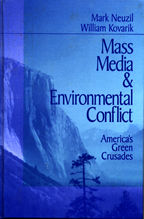The Blue Ridge Mountains where we live are on the border of a region called “Appalachia.” The area is rich in culture and natural history, but extraordinarily poor in terms of economic development and political leadership.
- Appalachian Feudalism New York Times, April 14, 2010 — Why are [mine disasters] happening? Three factors stand out: Appalachian people are have been historically oppressed, with ugly stereotypes used to justify their mistreatment. The history of coal mining in Appalachia shows over a century of constant violence against those who have stood up for human rights, for labor unions and for other reforms… And the external costs of coal, in terms of human health or the natural environment, have never been reflected in what consumers pay to keep the lights on.
- Second battle of Blair Mountain continues, Earth Island Journal, June 2, 2011 — The marchers who will take to the roads of West Virginia next week to try to stop the demolition of yet another mountain for the coal underneath will be following the same route that more than 10,000 well-armed miners took 90 years ago…
- Stone’s Throw: Earth Island Journal, Autumn, 2007 — High in the Appalachian Mountains of West Virginia, on a small island of green above a desert of rock and mud, a man in blue jean overalls wanders through an overgrown cemetery and struggles to contain his emotions. What happened to the graves down here?” the man asks. “There were three graves over here and one over here.”
Larry Gibson has the desperate sound of a man who has just realized a terrible loss. He points to an area where the forest ends abruptly, having beenscoured by enormous bulldozers. He wonders if the driver even saw the headstones.
Gibson, an environmental activist in his mid-50s, is on an inspection of his family cemetery that has been isolated by mountaintop removal (MTR) mining. He has been asking for permission to inspect the cemetery for a year and a half. Finally, on August 4, 2007, he is allowed to visit, and his worst fears are confirmed. Most of the graves are still in place, covered with vinesand short plants, but there have been losses.
“The people who are buried over there – or who were buried over there – are my great-great-great-grandparents,” Gibson says, his voice choking. “It’s my history they’re wiping out – 200years of my past.”
The land that spawned Larry Gibson and generations before him is very different today than it was only a few years ago. Not far away from the cemetery, the earth suddenly drops off hundreds of feet in jagged man-made cliffs of gray-brown rock.
Across the gaping mine site, running creeks fall from the living edge of the forest. The waterfalls appear tiny in the distance, and make no sound against the monstrous diesel cacophony of gigantic earth movers that eat awayat the mine pit below.
Down in the pit, the earth is laid open like a cadaver on a dissecting table, and near the bottom, coal seams stretch horizontally like thick black wounds.
This is all that is left of the mountain that Gibson grew up with – a few dozen headstones rising above the rest of the land like a cemetery in the sky. . .

 Revolutions in Communication
Revolutions in Communication Mass Media & Environmental Conflict
Mass Media & Environmental Conflict